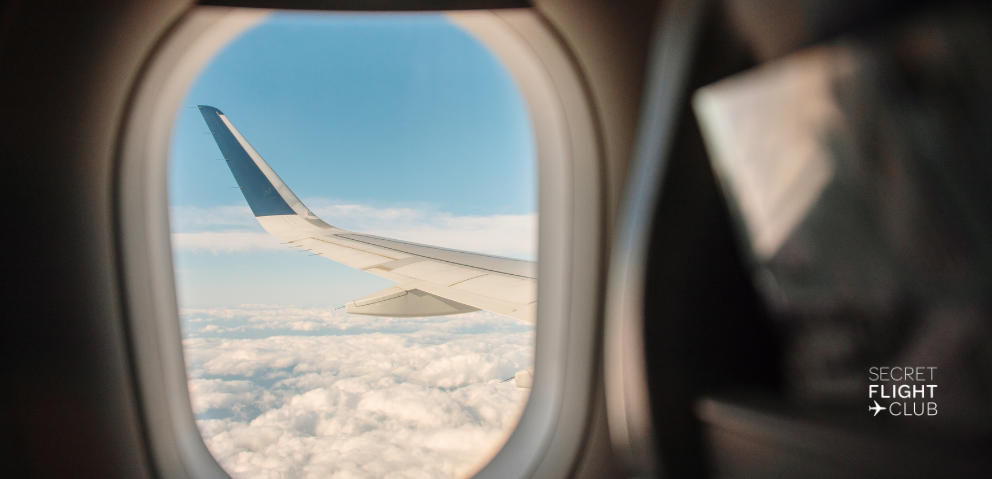Why Do Windows Have to Be Open on Take off? Discover the Truth
16 September 2024

Have you ever wondered why flight attendants insist on keeping airplane windows open during take off? It's not just a quirky rule; there's a fascinating science behind it. This seemingly small detail has a significant impact on your safety and the crew's ability to manage potential emergencies. You might be surprised to learn that those little windows play a crucial role in your journey from runway to sky.
In this article, you'll discover the truth about why windows have to be open on take off. We'll explore the science of light adaptation and how it affects your eyes during critical flight phases. You'll also get an insider's look at how the crew uses these windows as vital tools. We'll bust some common myths about open windows and peek into the future of aircraft window technology. So fasten your seatbelt and get ready to see air travel in a whole new light!
The Science Behind Open Windows: Light Adaptation
Ever wondered why flight attendants insist on raising those pesky window shades during take off and landing? Well, buckle up, because we're about to embark on a journey through the fascinating world of ocular science at 35,000 feet!
Eye adjustment to external conditions
Your eyes are like tiny superheroes, constantly adapting to changing light conditions. But even superheroes need time to suit up! It can take anywhere from 10 to 30 minutes for your eyes to fully adjust to darkness. That's why dimming the cabin lights isn't just about setting the mood for in-flight naps.
By keeping those windows open, you're giving your eyes a head start on adapting to the outside world. It's like a pre-flight warm-up for your peepers, ensuring they're ready for action if needed.
Importance in emergency scenarios
Now, let's talk about the elephant in the cabin – emergencies. Open windows are your secret weapon in these rare but crucial moments. They boost your "situational awareness," which is a fancy way of saying you'll know what's going on outside.
Imagine this: you spot a fire on the right side of the aircraft through your window. You'd naturally head for the left side exits, right? That split-second decision could be a lifesaver, especially if the cabin crew is unable to assist.
Cabin lighting considerations
Here's where it gets really interesting. Pilots actually play with cockpit lighting like DJs at a rave – but for safety, not sick beats. In a lightning storm, they crank up the lights to avoid being "flash-blinded" by sudden bolts.
Similarly, dimming cabin lights isn't just about conserving engine power (though it does help shorten takeoff rolls). It's about making those emergency exit signs pop like neon signs in Vegas. In low light, these crucial markers become beacons of hope, guiding you to safety if needed.
So next time you're tempted to grumble about open windows, remember: you're not just looking out; you're looking out for yourself!
Crew Perspective: Windows as a Vital Tool
Ever wondered why the cabin crew are so keen on those little portals to the outside world? Well, they're not just there to give you a bird's eye view of the clouds! For the flight crew, those windows are like their trusty sidekicks in the sky.
Assessing external hazards
You might think you're just being nosy when you peek out the window, but you're actually an extra set of eyes for the crew. Imagine spotting an engine fire or a wingtip collision – things the pilots can't always see from their cockpit perch. By keeping those shades up, you become an honorary member of the safety team. So next time you spot something unusual, don't be shy – give a shout to the crew. You might just save the day!
Determining safe evacuation routes
In the unlikely event of an emergency, those open windows become the crew's crystal ball. They need to quickly assess the situation outside and decide which exits are safe to use. Is there a fire on one side? Debris blocking an exit? With the windows open, they can make these split-second decisions without fumbling with stubborn shades. It's like giving them X-ray vision when every second counts!
Communication with ground personnel
Open windows aren't just for the folks inside the plane. They're also a lifeline to the outside world. Emergency responders need to see into the cabin, and trust me, you don't want them using cutting tools on the fuselage while you're leaning against it! Those open windows allow for quick visual communication between the crew and ground personnel, ensuring a smoother rescue operation if needed.
Debunking Myths: Common Misconceptions About Open Windows
Ready to have your mind blown? Let's debunk some of the wildest myths about those pesky aeroplane windows. Buckle up, because we're about to take off into the world of high-flying fallacies!
Pressure-related concerns
Ever heard that opening a window mid-flight would suck you out faster than a vacuum cleaner on steroids? Well, hold onto your hats, because that's pure Hollywood nonsense! In reality, you'd have better luck arm-wrestling a gorilla than prying open a pressurised cabin window. These bad boys are designed to withstand the immense pressure difference, so you can breathe easy (literally).
Temperature control fallacies
Think those windows are your personal thermostat? Think again! While it's true that cabin temperature can be as unpredictable as British weather, your window isn't the culprit. Airlines actually pump in warm air from the engines to keep you toasty at 30,000 feet. So, if you're feeling like a human popsicle, blame the overzealous air conditioning, not the windows.
Privacy and comfort debates
Some folks reckon those new fangled dimming windows are the bee's knees for privacy. But here's the kicker – they might be robbing you of the most spectacular in-flight entertainment: the view! Sure, screens are great, but can they really compare to the majesty of soaring above the clouds? It's like trading a front-row seat at a concert for a grainy YouTube video. Sometimes, the old ways are the best ways!
Technological Advancements: The Future of Aircraft Windows
Hold onto your seat belts, folks! The future of aircraft windows is about to take off, and it's looking brighter than ever – or darker, depending on your preference!
Electrochromic windows
Say goodbye to those flimsy plastic shades and hello to the magic of electrochromic technology! These whizz-bang windows use a special gel sandwiched between two transparent layers that change opacity at the touch of a button. It's like having sunglasses for your aeroplane! You can go from crystal clear to pitch black faster than you can say "turbulence." And the best part? No more wrestling with stubborn shades or accidentally whacking your neighbour in the head while trying to adjust them.
Enhanced safety features
But wait, there's more! These high-tech windows aren't just about looking cool. They're packed with safety features that'll make your flight smoother than a first-class cocktail. Infrared cameras give pilots superhero vision, letting them see the runway even when it's foggier than a London morning. And those clever tail sensors? They're like overprotective parents, constantly checking to make sure the plane's backside doesn't get too close to the ground during take off or landing.
Passenger experience improvements
Get ready for the ultimate in-flight entertainment – and we're not talking about those tiny screens on the back of seats. These smart windows block out 99.9% of UV rays, keeping your skin safe and your nap uninterrupted. Plus, with the ability to control the tint from your seat, you can create your own personal bubble of comfort. It's like having your own private jet, minus the eye-watering price tag!
Conclusion
The humble aeroplane window serves a far greater purpose than just offering stunning views. Its role in enhancing passenger safety and aiding crew operations has a significant impact on air travel. From helping our eyes adjust to external conditions to providing crucial visibility in emergencies, these small portals play a big part in ensuring smooth flights.
As we look to the future, technological advancements are set to revolutionise aircraft windows. Electrochromic windows and enhanced safety features are not just improving the passenger experience but also boosting overall flight safety. These innovations show that even the simplest aspects of air travel can be reimagined to make flying safer and more comfortable for everyone on board.
FAQs
Why must window shades be open during aircraft take off?
During take off and landing, which are the most critical phases of a flight, keeping window shades open is essential for safety. This practise enables cabin crew to quickly assess outside conditions and respond effectively in emergencies, such as fires or debris, which are more likely during these times.
What is the main reason for the requirement to keep aircraft windows open during take off?
The primary reason for keeping window shades up during take off and landing is to facilitate evacuation in case of an emergency. Open shades allow both passengers and crew to see outside conditions, which is crucial for determining the safest evacuation route if an emergency arises.
Is it necessary for windows to be open during aircraft take off?
Yes, it's necessary for window shades to be open during take off and landing. This not only allows the crew to monitor external conditions for safety hazards but also helps in orienting passengers, making it easier for them to follow instructions during emergencies.
Why do windows need to remain open when an aircraft is taking off?
Keeping the window shades open during take off ensures that in the event of an emergency, passengers and crew can have a clear view of the outside, enabling a quick assessment of whether it is safe to evacuate in certain directions based on visible hazards like fire or smoke.
Why are passengers asked to open window shades before take off and landing?
Passengers are requested to open window shades during take off and landing as these are critical times in flight. Open shades help in preparing the cabin for any immediate emergencies by allowing crew and passengers to see outside, ensuring that any potential hazards can be spotted promptly. This precaution helps in the swift and safe evacuation of the aircraft if necessary.

